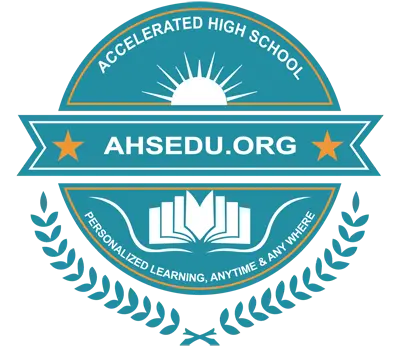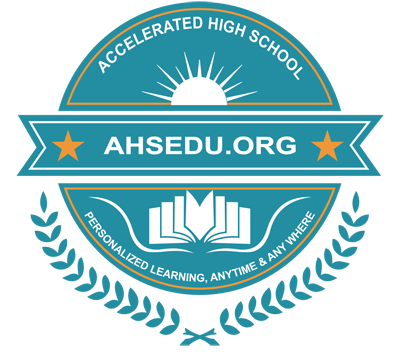Accelerated High School
Standardized Curriculum of General Science-II
Scientific and technological advances have proliferated and now permeate most aspects of life in the 21st century. It is increasingly important that all members of our society develop an understanding of scientific and engineering concepts and processes. Learning how to construct scientific explanations and how to design evidence-based solutions provides students with tools to think critically about personal and societal issues and needs. Students can then contribute meaningfully to decision-making processes, such as discussions about climate change, new approaches to health care, and innovative solutions to local and global problems.
Mission:
All students will understand the scientific concepts and processes required for personal decision-making, participation in civic life, and preparation for careers in STEM fields (for those who choose).
Vision:
Prepare students to become scientifically literate individuals who can effectively:
- Apply scientific thinking, skills, and understanding to real-world phenomena and problems;
- Engage in systems thinking and modeling to explain phenomena and give a context for the ideas to be learned.
- Conduct investigations, solve problems, and engage in discussions;
- Discuss open-ended questions that focus on the strength of the evidence used to generate claims.
- Read and evaluate multiple sources, including science-related magazine and journal articles and web-based resources,, to gain knowledge about current and past science problems and solutions and develop well-reasoned claims.
- Communicate ideas through journal articles, reports, posters, and media presentations that explain and argue.
Spirit and Intent:
The AHS science curriculum has been prepared and standardized following The New Jersey Student Learning Standards for Science (NJSLS-S), which describe the expectations for what students should know and be able to do as well as promote three-dimensional science instruction across the three science domains (i.e., physical sciences, life sciences, and earth and space sciences). From the earliest grades, the expectation is that students will engage in learning experiences that enable them to investigate phenomena, design solutions to problems, make sense of evidence to construct arguments, and critique and discuss those arguments (in appropriate ways relative to their grade level).
The foundation of the NJSLS-S reflects three dimensions: science and engineering practices, disciplinary core ideas, and cross-cutting concepts. The performance expectations are derived from the interplay of these three dimensions. These three components must be integrated into all learning experiences. The three dimensions within each standard document are intentionally presented as integrated components to foster sense-making and design solutions to problems. Because the NJSLS-S is built on the notions of coherence and contextuality, each of the science and engineering practices and cross-cutting concepts appears multiple times across topics and at every grade level. Additionally, the three dimensions should be an integral part of every curriculum unit and should not be taught in isolation.
Three Dimensions of AHS Science Curriculum:
The performance expectations reflect the three dimensions and describe what students should know and be able to do. In layman’s terms, they are “the standards.” They are written as statements that can be used to guide assessment and allow for flexibility in the way that students can demonstrate proficiency. The example below is provided to illustrate the interconnected nature of the NJSLS-S components.
Becoming familiar with science practices and cross-cutting concepts is a critically important first step in designing learning experiences reflective of the three dimensions. A description of each of the science and engineering practices and the cross-cutting concepts can be found in the next sections. Further, for students to develop proficiency in the NJSLS-S, they will need to engage in learning experiences that are meaningful, cumulative, and progressive. Learning experiences are designed to be meaningful, go beyond reading about science concepts, and provide opportunities for students to be active learners and make sense of ideas. Cumulative learning experiences provide opportunities for students to use and build on ideas that they have learned in previous units. Progressive learning experiences provide multiple occasions for students to engage in ways that enable them to improve their construction of explanations and solutions over time by iteratively assessing them, elaborating on them, and holding them up to critique and evidence.
Curriculum for Grade-II General Science:
Standard 1: Waves and Their Applications in Technologies for Information Transfer.
Learning Objectives:
- Plan and conduct investigations to provide evidence that vibrating materials can make sound and that sound can make materials vibrate.
- Make observations to construct an evidence-based account that objects can be seen only when illuminated
- Plan and investigate to determine the effect of placing objects made with different materials in the path of a beam of light
- Use tools and materials to design and build a device that uses light or sound to solve the problem of communicating over a distance.
Topics of AHS-GS:
Magnets
- Identify magnetic and non-magnetic objects
- Identify different parts of a magnet (north pole, south pole)
- Identify magnets that attract and repel
- Everyday uses of magnets.
Heat
- Predict heat flow
Standard 2: From Molecules to Organisms: Structure and Processes
Learning Objectives:
- Use materials to design a solution to a human problem by mimicking how plants and/or animals use their external parts to help them survive, grow, and meet their needs.
- Read texts and use media to determine patterns in the behavior of parents and offspring that help offspring survive.
Topics of AHS-GS:
Human Body
- Identify basic parts of the body
- Understand the functions of each body part
- Explore the five senses
- Taking care of our bodies: nutrition and exercise
Plants
- Identify different parts of plants
- Learn common types of plants(flowers, trees, grass)
- Read and construct flowering plant life cycle diagrams
- How do flowering plants make new plants?
Animals
- Read animal life cycle diagrams
- Construct animal life cycle diagrams
- Compare different animals' life cycles
- Pollinator: ruby-throated hummingbird
- Pollinator: Indian flying fox
- Pollinator: painted lady butterfly
- Seed disperser: Eurasian red squirrel
- Seed disperser: African elephant
- Seed disperser: common ostrich
- Benefits of group behavior: North American caribou
- Benefits of group behavior: African wild dogs
- Benefits of group behavior: leaf-cutter ants
- Body parts and their functions
- How do living things change their environments to meet their needs?
- How do gray squirrels change the forest to meet their needs?
Standard 3: Heredity: Inheritance and Variation of Traits
Learning Objectives:
- Make observations to construct an evidence-based account of how young plants and animals are like, but not exactly like, their parents.
Topics of AHS-GS:
Traits
- Observe traits
- Introduction to adaptations
- Why We Look Different: Exploring Traits and Variations"
- "Passing Traits: How Parents Influence Offspring"
- "Discovering Diversity: Animal Traits and Adaptations"
- "Family Resemblance: Understanding Inherited Traits"
- "From Parents to Offspring: Exploring Genetic Traits"
- "Nature's Puzzle: Investigating Variations in Plants and Animals.
Standard 4: Motion and Stability: Forces and Interactions
Learning Objectives:
- Plan and investigate to compare the effects of different strengths or different directions of pushes and pulls on the motion of an object.
- Analyze data to determine if a design solution works as intended to change the speed or direction of an object with a push or a pull.
Topics of AHS-GS:
Forces and Motion
- Identify pushes and pulls
- How do mass and force affect motion?
- Compare the speeds of moving objects
Standard 5: Energy
Learning Objectives:
- Make observations to determine the effect of sunlight on Earth’s surface.
- Use tools and materials to design and build a structure that will reduce the warming effect of sunlight on an area.
Topics of AHS-GS:
Standard 6: Earth Systems
Learning Objectives:
- Use and share observations of local weather conditions to describe patterns over time.
- Construct an argument supported by evidence for how plants and animals (including humans) can change the environment to meet their needs.
Topics of AHS-GS:
Earth's Resources
- Introduction to natural resources.
- Natural vs Man-made resources
- Learn about reducing, reusing, and recycling resources
- Identify water bodies on earth
Earth's Features and Events
- Identify Earth’s land features
- Classify changes to Earth's surface
- Find evidence of changes to Earth's surface
- Changes to Earth's surface: earthquakes
- Changes to Earth's surface: volcanic eruptions
- Changes to Earth's surface: erosion
Rocks and Minerals
- Identify rocks and minerals
- Uses of rocks and minerals in our daily life
- Differentiate between rocks and minerals
- Classify rocks and Minerals by Color and Shape
Weather
- Describe the weather
- Types of precipitation
- Severe weather: blizzards
- Severe weather: tornadoes
- Severe weather: hurricanes
- Read a thermometer
- Compare temperatures on thermometers
Standard 7: Matter and its Interactions:
Topics of AHS-GS
Changes in Matter
- States of matter: solid, liquid, gas.
- Classify matter as solids, liquids, and gases
- Identify solids, liquids, and gases
- Sort solids, liquid and gases
- Differentiate between solids, liquids, and gases
Changes of State
- Changes caused by heating and cooling
- Change-of-state diagrams: solid and liquid
- Change-of-state diagrams: liquid and gas
- Change-of-state diagrams: solid, liquid, and gas
- Heating, cooling, and changes of state: melting and freezing
- Heating, cooling, and changes of state: vaporizing and condensing
Physical and Chemical Change
- Identify Physical and Chemical Changes
Mixtures
- Identify mixtures
Standard 8: Earth and Human Activity
Learning Objectives:
- Use a model to represent the relationship between the needs of different plants or animals (including humans) and the places they live.
- Ask questions to obtain information about the purpose of weather forecasting to prepare for, and respond to, severe weather.
- Communicate solutions that will reduce the impact of climate change and humans on the land, water, air, and/or other living things in the local environment.
Topics of AHS-GS
Living Things and Their Habitats
- Identify living and non-living things
- Identify plants and animals
- Identify vertebrates and invertebrates
- Identify mammals, birds, fish, reptiles and amphibians
- Learn about different habitats of living organisms
Human Impacts:
- Reduce, reuse, and recycle
Standard 9: Engineering Design
Learning Objectives:
- Ask questions, make observations, and gather information about a situation people want to change (e.g., climate change) to define a simple problem that can be solved through the development of a new or improved object or tool.
- Develop a simple sketch, drawing, or physical model to illustrate how the shape of an object helps it function as needed to solve a given problem.
- Analyze data from tests of two objects designed to solve the same problem to compare the strengths and weaknesses of how each performs.
Topics of AHS-GS:
Materials
- Identify properties of an object
- Compare properties of objects
- Compare properties of materials
- Identify materials in objects
- Identify multiple materials in objects
Units and Measurement
- Choose units of time
- Choose customary units of distance
- Choose metric units of distance
- Abbreviate time and length units
- Abbreviate mass and volume units







